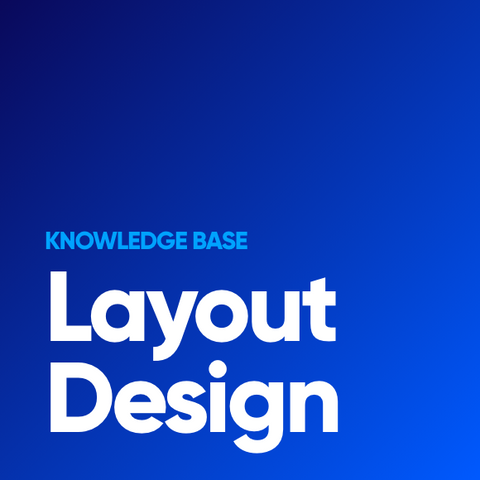Layout Design: Crafting the Visual Arrangement
In the vast realm of design, a fundamental and ever-present element forms the core of visual communication—Layout Design. This dynamic concept is more than just the placement of text and images; it's a deliberate arrangement that guides the viewer's eye, conveys information, and shapes the aesthetic experience. This comprehensive exploration will delve into layout design, unveiling its significance, decoding its applications, and understanding its pivotal role in visual communication.
Revealing the Essence of Layout Design
At its core, layout design organizes visual elements, text, and images within a defined space. The essence of layout design lies in its ability to create a structured and harmonious visual composition that effectively communicates the intended message. It is a creative endeavor that balances aesthetics, functionality, and storytelling.
Why is Layout Design so important?
The significance of layout design is rooted in its capacity to impact how information is perceived, making it more accessible, engaging, and memorable for the viewer.
Decoding the Significance
The significance of layout design in the realm of visual communication cannot be overstated:
-
Information Hierarchy: Layout design establishes an information hierarchy, guiding the viewer's eye to key content and ensuring the most critical information is readily accessible.
-
Visual Impact: It determines the visual impact of a design, influencing the overall aesthetic and first impressions.
-
Storytelling: Layout design contributes to storytelling by arranging elements in a sequence that conveys a narrative or message.
-
User Experience: In digital design, layout affects the user experience by providing intuitive navigation and enhancing the usability of a website or application.
-
Brand Identity: Consistent layout design reinforces brand identity by creating a cohesive visual language for a company's materials.
Applications of Layout Design
Layout design finds applications across various design fields, including:
-
Editorial Design: Editorial designers use layout design to structure content in newspapers, magazines, and books, ensuring readability and visual appeal.
-
Web Design: Web designers apply layout design principles to create user-friendly and aesthetically pleasing websites, optimizing content organization and user interactions.
-
Advertising: Layout design plays a vital role in creating visually compelling and memorable advertisements that resonate with the target audience.
-
Packaging Design: Designers utilize layout design to communicate product information, branding, and benefits effectively.
-
Event Marketing: Event marketers employ layout design in promotional materials, such as flyers and posters, to convey event details and capture attention.
Creating Effective Layout Designs
To create effective layout designs, consider these strategies:
-
Understanding the Audience: Know your target audience and tailor the layout to their preferences and needs.
-
Information Hierarchy: Establish a clear information hierarchy with prominent placement for crucial content.
-
Grid Systems: Employ grid systems for alignment and consistency, which help create a structured and visually pleasing layout.
-
Whitespace: Use whitespace strategically to create balance and prevent visual clutter.
-
Typography: Pay attention to typography choices and use fonts that enhance readability and aesthetics.
Celebrating the Impact of Layout Design
The impact of layout design in the realm of visual communication is profound:
-
Effective Information Delivery: Layout design ensures that information is delivered in a structured and comprehensible manner, making it accessible to the viewer.
-
Visual Appeal: It influences the visual appeal of designs, creating a memorable and engaging experience for the audience.
-
Storytelling: Layout design is instrumental in conveying narratives, whether in editorial content, product presentations, or brand stories.
-
User Experience: In the digital world, it enhances the user experience by providing clarity and ease of navigation.
-
Brand Consistency: Consistent layout design reinforces brand identity, ensuring that materials maintain a cohesive and recognizable visual language.
Layout Design Across Diverse Industries
Layout design is pervasive in various industries:
-
Education: Educational materials, from textbooks to online courses, rely on layout design to present information effectively.
-
Healthcare: Layout design is essential for patient information materials, ensuring clarity and comprehension.
-
Entertainment: The entertainment industry utilizes layout design in promotional materials, event programs, and visual storytelling.
-
Retail: In the retail sector, layout design influences the presentation of products in physical stores and online marketplaces.
-
Technology: Technology companies employ layout design for user interfaces, creating user-friendly and visually appealing applications and websites.
The Future of Layout Design
As design and technology continue to evolve, the future of layout design holds exciting possibilities:
-
Responsive Design: Layout design will continue to adapt to various devices and screen sizes, ensuring an optimal user experience.
-
User-Centric Design: The emphasis on user-centric design will lead to highly intuitive layouts prioritizing user needs.
-
Sustainability: Sustainable design practices may influence layout design, promoting eco-friendly and resource-efficient layouts.
The Art of Visual Composition
Layout design is more than an arrangement of text and images; the art of visual composition captures attention, tells stories, and conveys information effectively. The silent guide directs the viewer's eye, the creative force that transforms content into an engaging experience. Layout design isn't just about organization; it's about crafting a visual narrative that speaks to the audience. In the ever-evolving design world, layout design stands as the cornerstone, shaping how we perceive and interact with visual information.

Layout Design




